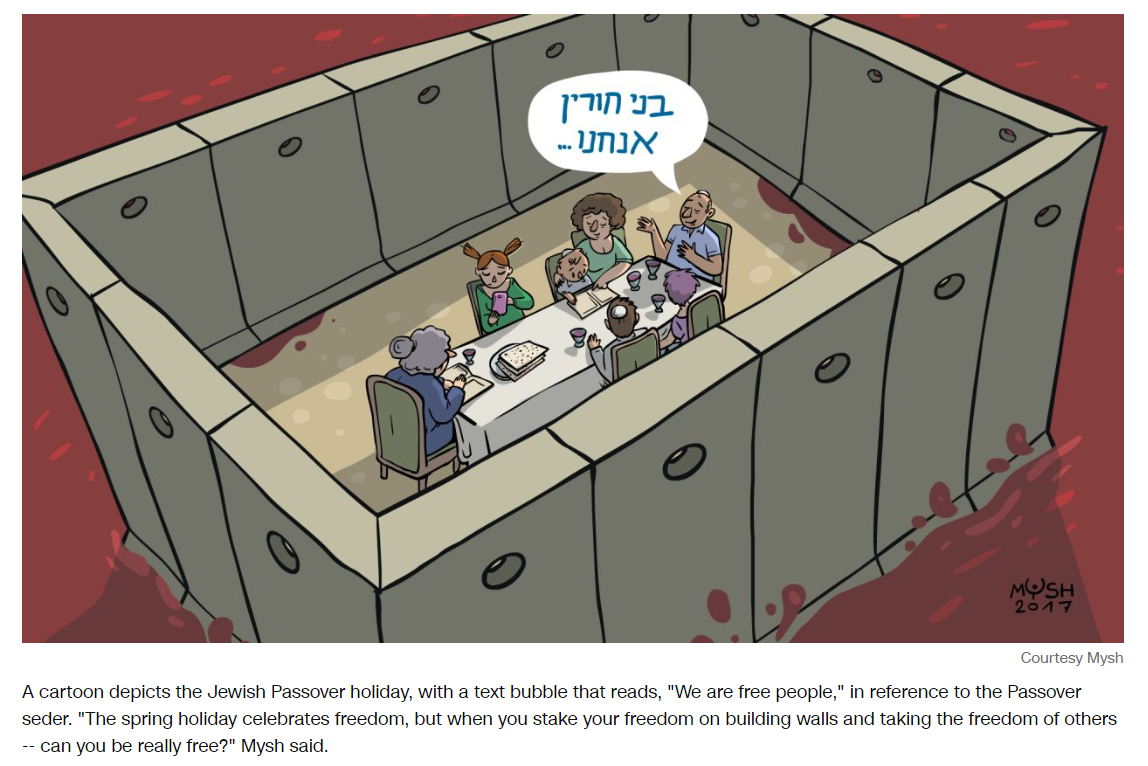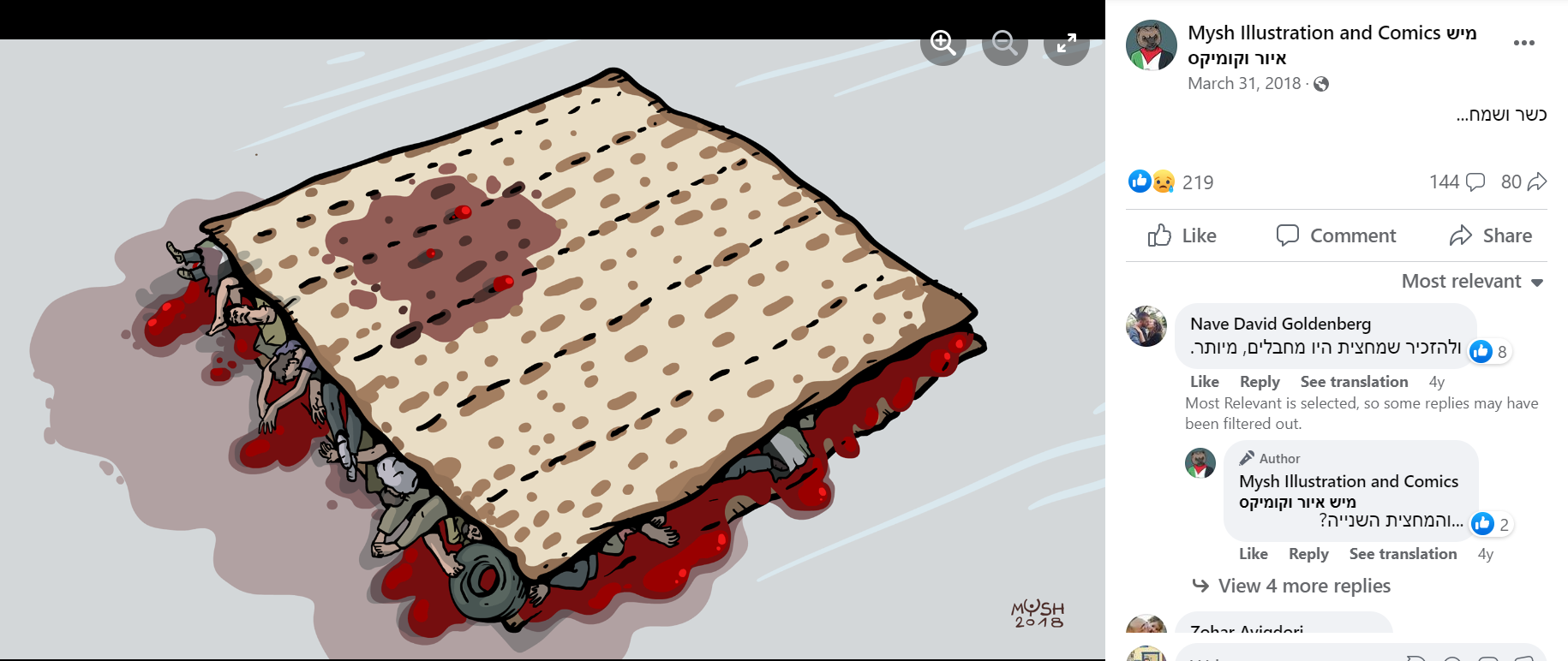If CNN needs to flirt with antisemitic tropes in order to report on controversial Israeli minister Itamar Ben-Gvir, what does that say about the network?
In an article dated January 25, 2023 titled “As Israel bans Palestinian flags, one artist protests with his brush,” CNN’s Abeer Salman seemed to go out of her way to not just include ahistorical swipes at the Jewish state, but also – in borrowing from centuries of antisemitic blood libels – associate the holiday of Passover with Jews benefiting from the shedding of blood of non-Jews.
The focus of the article is a portrait by the largely unknown, far-left Israeli cartoonist Michael Rozanov – who goes by “Mysh” – that portrays Ben-Gvir in the colors of the Palestinian flag. The portrait followed Ben-Gvir’s controversial decision to order police to remove Palestinian flags from public spaces.
Such is Mysh’s significance and the attention that his Ben-Gvir portrait drew that “dozens” of Israel’s 9.3 million citizens also asked him to draw their portraits in the colors. Meanwhile, Ben-Gvir’s decision was widely criticized by much of the rest of Israeli society, including editorials in national newspapers.
However, CNN and Salman did not limit themselves to publishing a puff piece on a far-left cartoonist lampooning a controversial minister. Instead, they inexplicably included a cartoon recalling multiple antisemitic themes, as well as unchallenged, ahistorical commentary depicting Israelis as needlessly cruel.
Of all Mysh’s other cartoons, Salman chose to highlight one that depicts a Jewish family celebrating Passover, surrounded by a sea of blood. The imagery echoes multiple antisemitic themes and conspiracy theories. For one, it flirts with the ancient blood libel that Jews use the blood of non-Jews during Passover to bake matzah. For another, it plays on themes of Jews accruing benefits at the expense of the blood and freedom of others. Aside from being a vacuous viewpoint of the conflict, it plays into the countless conspiracies of Jews manipulating the world for their own selfish benefit.
Giving Mysh the benefit of the doubt, that perhaps his work is simply being misinterpreted, becomes less tenable the more one investigates the rest of his work, however. And while Salman included background on Mysh in her story, she seems to have been curiously incurious about glancing through his easily accessible and publicly available portfolio of cartoons.
For example, another cartoon explicitly used the antisemitic Passover blood libel, depicting Palestinians being crushed to death between two pieces of matzah as blood pours out.
Mysh also has a particular fondness for comparing Israelis to Nazis. Even when one vociferously disagrees with or detests particular Israeli politicians, the comparison is beyond the pale. It demonstrates either an astonishing level of ignorance on the part of Mysh or a willingness to minimize the mass dehumanization and industrial-scale slaughter of Jews to score cheap political jabs. So prevalent, and so baseless, are the comparisons by antisemites that in the most widely supported definition of antisemitism, the International Holocaust Remembrance Alliance’s working definition, “drawing comparisons of contemporary Israeli policy to that of the Nazis” is explicitly listed as an example of antisemitism.
This is all in addition to Mysh’s commentary for which Salman provides space, including his “powerful insight” that “the only reason” a checkpoint he apparently manned as an Israeli soldier existed “was to make the life of the people in the village more difficult.” One can find similar “insights” in Mysh’s work, such as one that depicts Israeli bombs turning innocent Palestinian children into terrorists. Such ahistorical commentary, which portrays Israelis as evil and cruel, might seem profound if one ignores that organized Arab terrorism and violence against Jews began long before Israel even came into existence, and that the checkpoints were a response to a wave of terror attacks, including devastating suicide bombings. Yet, Salman left such an obviously inaccurate claim unchallenged, even though her own network’s past reporting evidences the role these checkpoints have played in stopping such attacks.
A story of a cartoonist lampooning a controversial politician can of course be an interesting and newsworthy item. However, publishing a puff piece on Mysh, including a cartoon that so closely echoes the same antisemitic themes found in his other work, adds yet another example of CNN’s lengthy record of biased reporting and unchallenged platforming of antisemitism.


